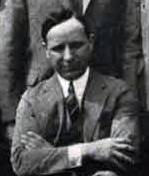![]() Over the years I spent countless hours (and dollars!) at my local Family History Centers. These are the “satellite” libraries of The Church of Jesus Christ of Latter-day Saints (LDS), where you can rent and view microfilmed genealogy records from the Family History Library in Salt Lake City, Utah.
Over the years I spent countless hours (and dollars!) at my local Family History Centers. These are the “satellite” libraries of The Church of Jesus Christ of Latter-day Saints (LDS), where you can rent and view microfilmed genealogy records from the Family History Library in Salt Lake City, Utah.
Alas, these centers will soon be no more! It is very apparent, at least in my area, they will soon close and no longer be available to genealogical researchers.
Formerly known as Family History Centers, today I guess they are re-branded as “FamilySearch Centers.” By all appearances the LDS church still promotes them, but my experiences say otherwise.
During the last decade, the centers have always had limited hours of operation. Usually it was two to three hours per day and only two or three days a week. The hours listed for each center on the official LDS website were invariably wrong. I always had to drive to the church to see the actual hours posted on the door because they changed frequently.
Now they have virtually no hours of operation. I recently wanted to order a microfilm. I drove by the church closest to me, but found no hours of operation for the Family History Center posted. So I drove to another ward on a day and time when I used to visit. They are open one day a week for three hours around lunch time, and the day I visited was not that day.
I had to wait another week to order my film. I came back the following week and rang the bell. Someone let me in, but when I went to walk down the hall to the Family History Center, the hallway was pitch black. “Oh the History Center is closed the month of August,” she said. It would be open the next week.
The third time I decided to call first. At the LDS website, I found instead that I could order a microfilm rental online. So I did, without having to visit the History Center first. A couple weeks later I received a call from a very outgoing, but astonished woman who said my film had arrived. She sounded like that didn’t happen very often. She graciously offered for me to view the film outside of their regular hours, which I quickly accepted because I was anxious to view the microfilm.
Once there I told her of my difficulty finding an open History Center. A lot had changed since I was last there. The staff I used to see is long gone. Out of nine microfilm readers, there were only two remaining. She said the older staff volunteers have moved on and there’s not much interest expressed by the younger church members. The hours were reduced because few if any people use the Family History Center any more. They are considering closing the Center altogether.
To be honest, it was three years since I was there myself. Although I have a few microfilms on “permanent” loan, I haven’t been back to reference them. I’ve been busy researching other family lines. The emergence of the Internet for online genealogy has really taken off. But I’m not ready to say goodbye to Family History Centers! The leads I get online all have to be followed up by consulting actual records. The cheapest and easiest way to get those records is via LDS microfilms.
FamilySearch is placing more and more records online, but that’s only a few hundred titles. Some are only indices, without images of the actual film. Consider the thousands of microfilms they have. It may be several years before all of them are available online. It’s too soon to close down their microfilm rental program!
What are we to do? The field of genealogy may regress before it moves forward again. The old research methods (i.e., microfilms) may be abandoned before technology evolves enough to fill the gap. Less information may become available before more information flourishes again. Perhaps we’ll check records the old fashioned way, by traveling to the courthouses where it resides.
It’s interesting to consider the goal of the Mormons. They trace ancestries so they can ritually baptize all souls. I guess there will come a time when that goal is accomplished. For decades they have been gathering and documenting ancestral lineages. Contemporary generations are probably close to being fully documented. The paper trail for earlier ancestors will eventually end. Consider how difficult it is to find evidence earlier than the seventeenth and sixteenth centuries. Information simply wasn’t recorded then or it has not survived.
So perhaps they have different plans. Will access to their accumulated records eventually be off limits? Technology may take us in a completely different direction than we expect. Our assumptions about the future of genealogy are based on the way things have been. We may get less when we think we’re about to get more.



[…] Centers, are a less and less used resource. Why? One writer, Mike Voisin, discusses the realities of their use, and I’ve also written about the subject — The New (Ir)Relevance of FamilySearch. One critical […]